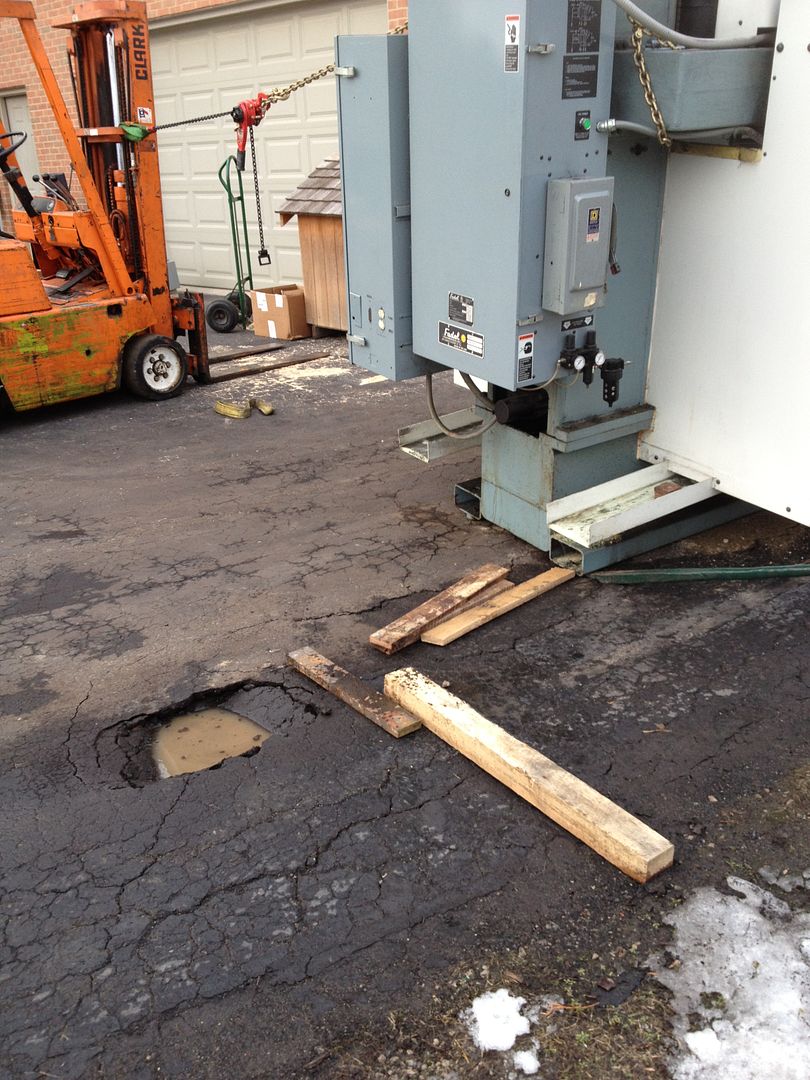My thoughts are yes. I've lifted a Barber Colman 16-56 gear machine and a pallet of change gears with my 7k BCS Hyster forklift, best guess on the weight is 9300 for the machine alone. That's a machine I could get up close to.
Also improved the counterweight to move my Fadal VMC15, its lightweight in the 5500 lb range but there was only so close I could get to that and I was more like 5500 lbs @ 36-40" load center, forget the exact details, but that equates in the 9k range @ 24" if you compute the resultant moment. It also required counterweight improvement to make me feel better.
I know you already know from your other adventures that the load center can be fine with the forks raised and a lot of back tilt, but creeps out as you lower the carriage. But this sounds like a machine you can get close to. In which I'd trust that the manufacturer has given you a "little extra". Not saying go overload your forklift, but carefully done in a rigging situation where you are moving at creep speed with slow deliberate movements it seems to work OK.
I would take a look at your forks as well, when I first got the forklift it had these thin lumber forks which tapered down to a nearly sharp point. Not ideal and so as I was moving cross-country I invested in some Cascade-Kenhar forks of 10k capacity, big thick suckers @ 2" x 6" x 60" which are terrible for pallets but awesome for machines. I even picked them up at their Ohio plant but they wouldn't give me a tour citing safety concerns

Here is my take on how to counterweight. I had these extra tractor weights and some S4 - I beam, I welded up some flat bar to trap in the slots of the overhead guard (its 1/4" thick punched plate) and bolt in from below. The idea was to get the weight back as far as possible to maximize what I could do with it. IIRC its 300lbs of cast but placed ~7 feet back from the front wheels, the equivalent moment balance @ 24" is around 1000 lbs of additional counterweight.
I should also add that this move, while drama free, started to compromise the asphalt driveway with some deep ruts. My conclusion is that the road base is half-assed in front of the next garage door over, which was added on to the original by previous owners.






 ) seems like the best way to find out to me.
) seems like the best way to find out to me.






